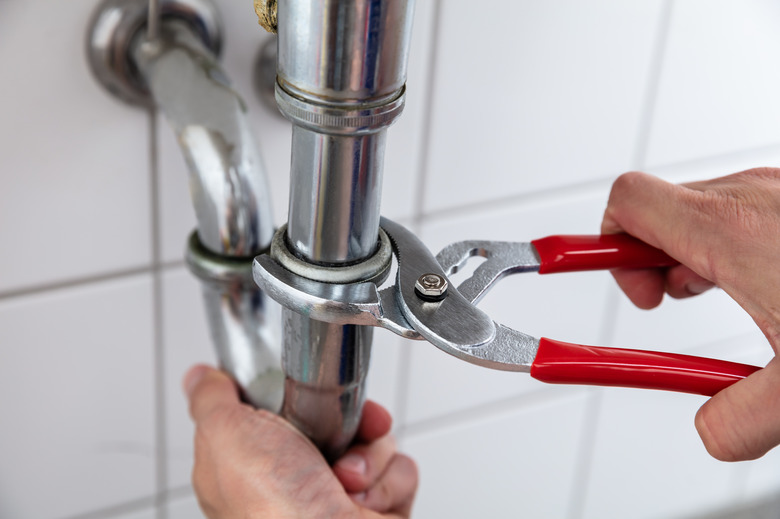How To Remove Mold In Pipes
Whether you're a homeowner or an apartment dweller, properly functioning plumbing is a must-have. Although it's a relatively rare occurrence, sometimes the pipes in your kitchen or bathroom sinks can develop mold, which must be addressed in order to keep your living environment healthy and safe. Fortunately, cleaning your drain pipes is a fairly simple process that can be done in a few minutes with natural, effective products like vinegar, baking soda or borax.
How to Kill Mold
How to Kill Mold
If you have mold in your pipes, you can kill it naturally with a couple of common household items — baking soda and vinegar. To do this, start by pouring a liberal amount of baking soda into your sink drain, which will work to dry up some moisture inside the pipes, and let it sit overnight without running any water down the drain.
Then, pour a couple of cups of either white vinegar or hydrogen peroxide down the drain, which will mix with the baking soda and begin to fizz. Once the fizzing has slowed down a little bit, take several cups of hot, but not boiling, water and pour them down the same drain, repeating as necessary.
Additionally, borax can be used to kill mold and is one of the safest and more effective bleach alternatives. It also eliminates odors in the process. You can use borax to kill mold by mixing 1 cup of borax powder and 1 gallon of water, then pouring that solution down the drain.
Spraying tea tree oil — which is naturally anti-fungal and can assist in removing drain fungus — and water into your pipes can also eliminate mold in some cases, although that application is generally left to surface mold seen on areas that are easy to scrub.
Identifying Mold
Identifying Mold
If you suspect that you may have some mold in your pipes but aren't entirely sure, there are a couple of things that may give it away. First, mold in pipes generally occurs in damp, dark areas and requires a food source of some kind to survive, so if you smell something foul coming from your drain, you may have mold living inside of it.
Additionally, if you spot leaks coming from your pipes or notice condensation building up on the outer surface of them in combination with any odors, you may have a mold problem to contend with. You may also be able to smell mold when you run your water faucets.
Mold in Your Water Supply
Mold in Your Water Supply
It's rare to find mold living in major water supplies, such as that from your town or city's water source, but it certainly can happen. If you think you may have moldy water, it's best to check and make sure. To test for mold in your water supply, you can purchase mold testing kits at most hardware stores or online.
If you suspect that you have mold in your water pipes, filtration system or other water delivery system, it's recommended to purchase two kits for the most accurate diagnosis. Mold in drinking water symptoms include irritation of the throat, coughing and wheezing, which are more prevalent among those with mold allergies.
